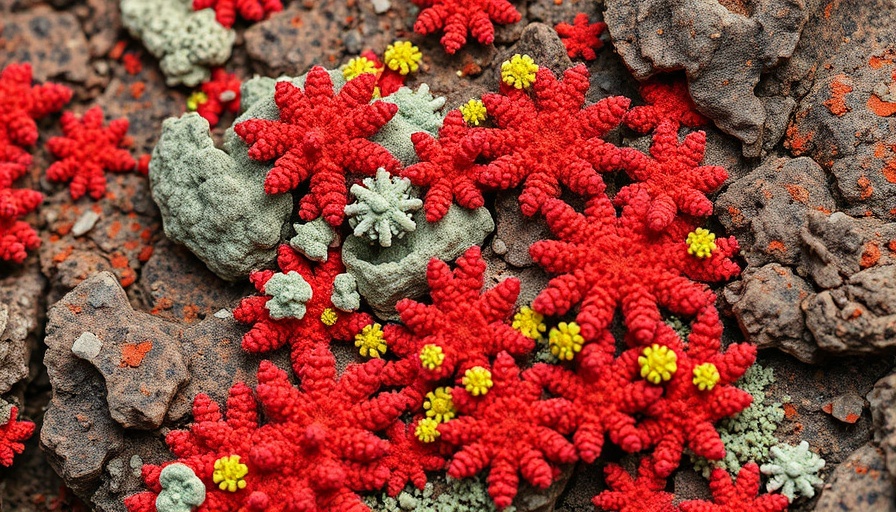
Can Lichens Be Our Key to Exploring Harsh Environments?
The vast emptiness of Mars poses serious challenges for human habitation and exploration. But a fascinating group of organisms known as lichens, which can survive the most adverse conditions on Earth, has piqued the interest of scientists regarding their potential resilience on the Red Planet. Researchers, including botanist Kaja Skubała from the Polish Academy of Sciences, have examined the hardiness of lichens in simulated Martian conditions.
The Resilience of Lichens: Nature's Survivors
Lichens thrive in varied climates, from the freezing tundra to scorching deserts, thanks to their unique symbiotic relationship between fungi and photosynthetic algae or cyanobacteria. This adaptation enables them to withstand extreme heat and cold, prolonged droughts, and even radiation levels that would decimate many other life forms.
The study conducted by Skubała and her team specifically tested two lichen species, Diploschistes muscorum and Cetrarea aculeata, to determine their survival capabilities in conditions mimicking the Martian environment. Their findings, published in IMA Fungus, suggest that the fungal components of lichens maintain metabolic activity even under severe radiation exposure. This indicates that lichens might have a fighting chance in the harsh Martian landscape.
Understanding Radiation and Its Threats
The Martian environment is characterized by high radiation levels from solar flares and cosmic rays. This radiation poses significant risks to potential forms of life by causing cellular damage. However, previous studies focusing on the responses of lichens to UV radiation had not explored how they might react to ionizing radiation while still actively metabolizing.
According to the research team, "X-rays associated with solar flares and solar energetic particles reaching Mars should not affect the potential habitability of lichens on this planet." Their ability to endure such radiation without significant metabolic disruption positions lichens as potential candidates for future Mars exploration and possibly colonization.
Things We Can Learn from Lichens
The adaptability of lichens extends far beyond basic survival; they possess unique biological features that could inform advancements in various fields. For instance, their capacity to manage oxidative stress through melanin pigments and other metabolites can deepen our understanding of cellular defense mechanisms. This knowledge might also spark innovations in biotechnology, especially in developing radiation-resistant materials for space travel.
Why This Matters to Us
As we move closer to the possibility of life beyond our planet, understanding the tenacious nature of lichens provides valuable insights. These organisms offer a glimpse into what life might look like on other planets, how it could withstand inhospitable conditions, and what implications that has for human exploration.
For professionals and enthusiasts interested in fitness, biology, or space science, the lessons gleaned from lichens can provide a unique lens through which to view resilience and adaptability—not just in nature but in our own lives. Embracing these traits in health and short and long-term health plans correlates with the resilience demonstrated by lichens.
Conclusion: The Future of Exploration
The ongoing research into the potential for lichens to survive on Mars opens doors to understanding how life can exist in extreme environments. As we continue to push the boundaries of exploration, examining these humble organisms could yield groundbreaking knowledge about the limits of life—and help pave the way for future colonization of Mars. Embracing innovative research while aligning it with our self-care and health goals can inspire us to advance in our pursuits.
If you are intrigued by how nature's resilience can inform our exploration, consider following the latest developments in space science and biology. Understanding and appreciating these connections can enhance our daily lives and help us adapt amid changing environments.
 Add Row
Add Row  Add
Add 




Write A Comment